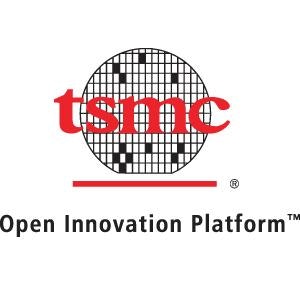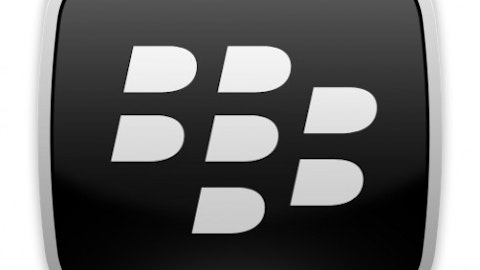One of the greatest difficulties in the smartphone market is making a product that can sell in enough quantity to be profitable. After all, smartphones have to operate at greater economies of scale in order to be able to be sold at all.
Understanding the ecosystem
First and foremost, you need to order enough chips from semiconductor manufacturers to make it worthwhile for them to ship any products to you. That’s a natural barrier to entry that makes it difficult for just anyone to build and market a phone. This means that competing in the smartphone space is not going to be as simple as opening up your own realty company or apartment community.
In a single month, for Taiwan Semiconductor Mfg. Co. Ltd. (NYSE:TSM) to consider building chips using whatever specifications a manufacturer demands would require the monthly capacity to at least be above 10,000 wafers. At 148 die per wafer, a company would need to at least order 10,000 x 148 = approximately 1.5 million in chips per month, or about 17.8 million chips per year.
There aren’t a lot of companies that can enter into the market and sell 1.5 million phones in their first year. Going forward, Taiwan Semiconductor Mfg. Co. Ltd. (NYSE:TSM) is likely to maintain a large percentage of the total global market in pure-play foundries.
The company believes that it can remain competitive by providing software to third parties that will allow them to design their own chips to be manufactured in a Taiwan Semiconductor Mfg. Co. Ltd. (NYSE:TSM) fab (design-for-manufacturing). The company currently has 45% market share in the fabrication segment and believes that tablets will contribute to the company’s growth.
Taiwan Semiconductor Mfg. Co. Ltd. (NYSE:TSM) projects that the tablet market will growth at a 23% compound annual growth rate between 2012 and 2017. The company believes that its current strategy will be effective in emerging applications. The company projects that the total semiconductor market will grow by 3% year-over-year in 2013. Foundry sales are projected to grow at a much higher rate than the total semiconductor market with analysts forecasting 19.9% sales growth for fiscal year 2013 for Taiwan Semiconductor Mfg. Co. Ltd. (NYSE:TSM).
Some say that QUALCOMM, Inc. (NASDAQ:QCOM) could be the middle-man that buys the chips and then redistributes them, but that is not the case. As Qualcomm states,
Through our own R&D accomplishments and through strategic partnerships with other forward-thinking companies, Qualcomm develops the breakthrough technology wireless companies need to power their business. We then openly license these innovations across the wireless industry, providing all companies-big or small-an equal opportunity to shape the future of wireless.
In other words, QUALCOMM, Inc. (NASDAQ:QCOM) has no distribution–what it does is license its intellectual property so that smaller companies can take the intellectual property and use it to place orders with some of the major fabricators like Global Foundries and Taiwan Semiconductor. Qualcomm’s growth is pretty much reassured as the company provides radio and processor technologies for smartphones.
The company also envisions tremendous potential in the machine-to-machine communications market, which has the potential to reach 50 billion machines, and 100 billion objects. QUALCOMM, Inc. (NASDAQ:QCOM) has many sources of growth making it feasible for the company to meet the 18% growth rate projected by analysts for the next five years. Also, let’s not forget Taiwan Semiconductor Mfg. Co. Ltd. (NYSE:TSM) will pump out 45% of those 100-billion chips for machines
Reason traditional OEMs never entered
Some investors criticize Dell Inc. (NASDAQ:DELL) for never entering into the smartphone space, and blame it on Dell’s stagnating performance. Thinking of this from a more practical standpoint, Dell made the right decision not to enter. It saved itself from losing billions of dollars in development-related costs. Not to mention, Dell could have had its phones pile up in inventory at AT&T Inc. (NYSE:T) and Verizon Communications Inc. (NYSE:VZ) stores across North America.
A firm must produce and sell at least 1.5 million devices in order to enter the market. If Dell Inc. (NASDAQ:DELL) isn’t able to do this, Dell will be stuck with a ton of inventory because the major phone carriers will most likely return the excess inventory.
Dell Inc. (NASDAQ:DELL) has been focused on investing its efforts into enterprise solutions instead. The company was able to report 10% year-over-year revenue growth in the enterprise solutions group in its latest quarter. The company grew its software business from $38 million to $295 million in revenue, year-over-year, during the first quarter. The company hopes to focus on software and enterprise solutions in order to become more profitable. Both of those markets provide better upside to Dell Inc. (NASDAQ:DELL) and its shareholders as they leverage Dell’s years of experience in the computer space.
Traditional mobile companies are also struggling
Five years ago, no one ever thought that the market for the high-end smartphone computing would become so large. In fact, a vast majority of companies were forced to enter into the market as they were already manufacturers of cell phones, and the logical product extension was to sell smartphones, even if it meant selling them at a loss.
Two examples of companies that barely broke even or are operating at a small loss include HTC and Research In Motion Ltd (NASDAQ:BBRY). That being the case, the weak performance brought by these company’s should attest to the wisdom longer-term executives in Silicon Valley have been able to recognize.
If you can’t become one of the most dominant players in a market in the next five years, chances are it would probably be pretty smart not to compete. Even Facebook Inc (NASDAQ:FB) with all of its experience and knowledge on user preferences and application development failed to create a mobile-operating system that could catch fire. HTC had to slash prices on its HTC First device (Facebook Inc (NASDAQ:FB) phone) to $0.99 and even then AT&T Inc. (NYSE:T) has had difficulty with clearing out the inventory of these phones. AT&T Inc. (NYSE:T) is sending these phones back to HTC.
This is why investors should never bank on the success of new products because products fail more often than they succeed.
Facebook Inc (NASDAQ:FB) has ramped research and development, spending by 500% since its IPO. While its first flagship product launch outside of its social network was a failure, at least the company is putting in an honest effort to diversify its business operation. I think the company will need to go back to the drawing board and figure out a stronger product strategy. In the meantime, its core advertising business is likely to provide reasonable upside.
Conclusion
Competing in mobile isn’t the cure to everything. Companies lose relevance; the market is becoming more segmented into larger players. Even whales like Facebook Inc (NASDAQ:FB) have trouble with coming up with compelling product ideas in the space. Some companies like Dell Inc. (NASDAQ:DELL) have been able to avoid the disaster of over-expanding.
Investors would do better by investing into Taiwan Semiconductor Mfg. Co. Ltd. (NYSE:TSM) and QUALCOMM, Inc. (NASDAQ:QCOM) as they are less exposed to the potential success or failure of different mobile phones.
Alexander Cho has no position in any stocks mentioned. The Motley Fool recommends Facebook Inc (NASDAQ:FB). The Motley Fool owns shares of Facebook and Qualcomm.
The article Smartphone Means High Risk originally appeared on Fool.com.
Alexander is a member of The Motley Fool Blog Network — entries represent the personal opinion of the blogger and are not formally edited.
Copyright © 1995 – 2013 The Motley Fool, LLC. All rights reserved. The Motley Fool has a disclosure policy.






